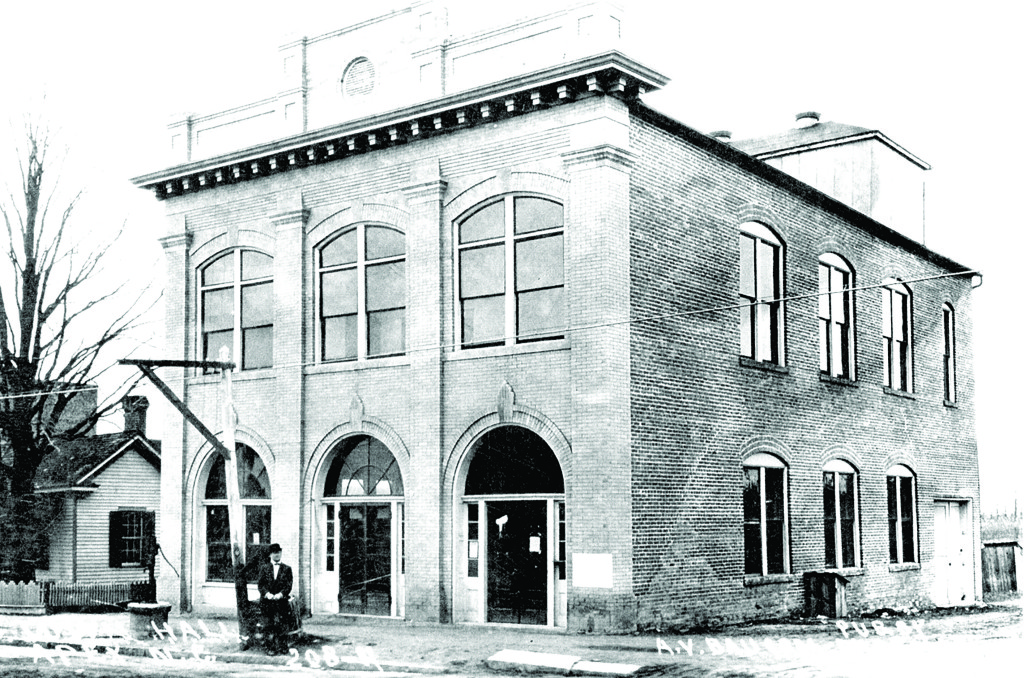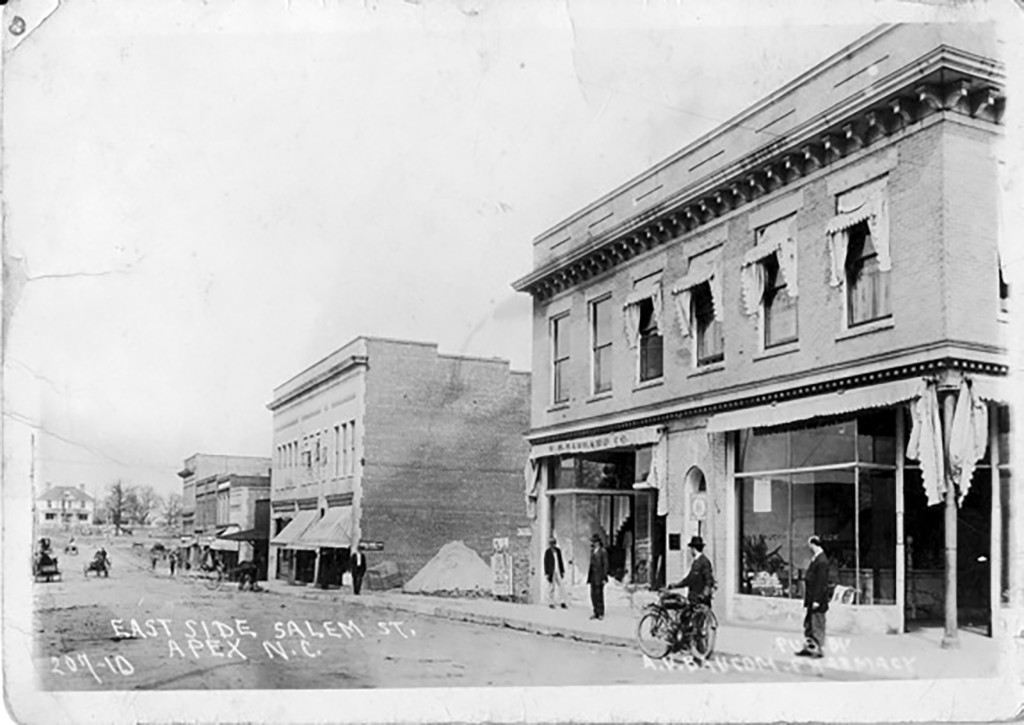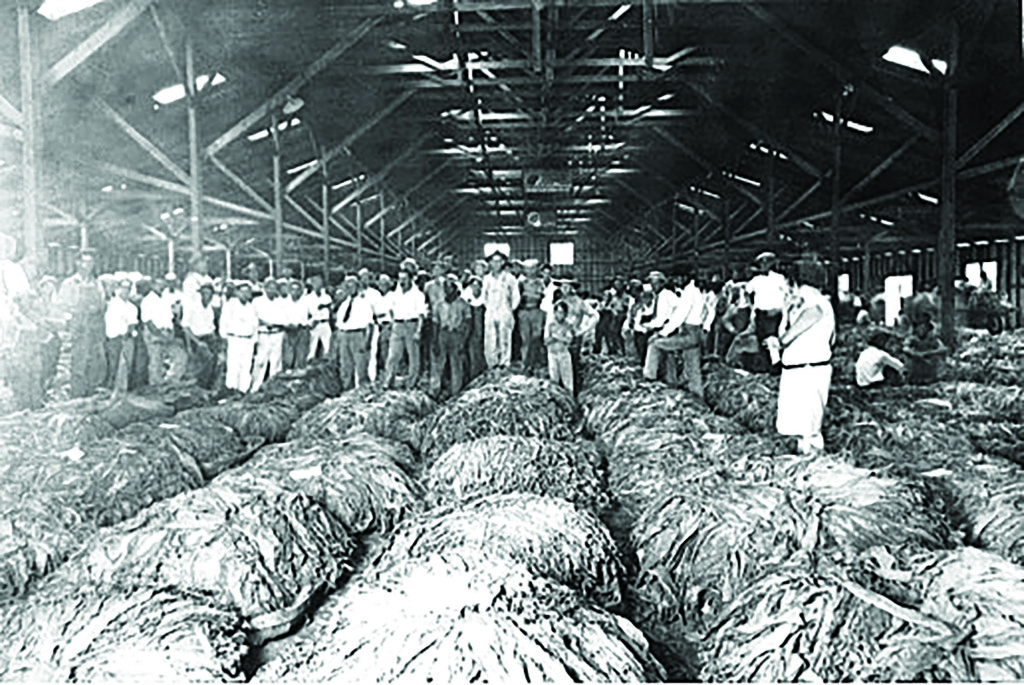Much of the history, and name, of Apex, North Carolina revolves around a railroad. In 1854, the Chatham railroad was first chartered to run though the land that is present day Apex to encourage communication between the North Carolina Railroad Company and the Chatham County coal business. Some historians believe this movement was driven by the Civil War and the possibility of using the railroad as war supply strategy. It was more than a decade after the charter, however, before the first train ran through the station. With the continued use of the railroad station, a small community soon began to grow. By 1873, the area that was once known by locals as “Log Pond” became the town known today as Apex.
The word Apex is defined as a point or summit. The railroad town earned this name as a result of being the highest point on the Chatham railroad between Richmond, Virginia and Jacksonville, Florida. The name Apex is also justified based on the way water flows in the town; water that falls on one side of present day Salem Street runs into the Neuse River and water that falls on the other side of the street flows into the Cape Fear River.
Although the railroad came around in 1853, the land was inhabited in 1830 when Patrick W. Dowd bought 1,500 acres of what is northern Apex today. He built a mansion on his land and established the Salem Meeting House, which eventually became the Salem Baptist Church. The land, although never appearing on a map, had a reputation for being excellent for deer hunting and was called as “Log Pond”. Other landowners in the area included John McClenahan Ellington and Hilliard Bell. These two men divided the land that is present day downtown Apex and Ellington sold his part of the land as town lots.
The land around Apex was heavily forested with pine trees and this resulted in the station quickly becoming a shipping point for lumber, tar, and turpentine. Ellington was one of the first to seize the opportunities presented by the railroad and used the station for his newly developed lumber business. Apex became one of the first towns to develop near Raleigh causing it to quickly become an active shopping and trading center.
By 1871, more citizens had moved to the area and Daniel Mann had opened a general store. Mann also applied for a post office franchise that was granted in October of that year. On February 23rd, 1873 Apex officially became a town. Henry Calvin Olive became the first mayor shortly after the town was formed. William F. Utely was named the first town marshal but there were no ordinances established until 1875.
The early government ordinances attempted to establish rules for drunken citizens and prohibiting certain events on Sundays. Some, including Reverend J.M. White, wanted to completely get rid of bars and banish drinking. Henry Calvin Olive’s basement served as the jail for drunken citizens who were kept there until they became sober once again.
One of the early developments to the new town of Apex was the construction of the house known today as the Maynard-Pearson house. In the 1870’s, Mr. James Jackson Maynard and Civil D. Pearson Maynard built the house on property that had been passed down through the Pearson family. The house resembled many houses of the time period: two-story with a breezeway to the dinning room and detached kitchen. The original house had a roof made of wooden shingles. In 1883, John Phineus Pearson and Ida Colon Maynard Pearson purchased the house from Civil Pearson, John’s sister, for $20. The property remained in the family until 1995 when Dr. John Kent Pearson sold the house and his portion of the property to MJK Developments LLC. The farmhouse was then transferred to Maurice Kouns, a philanthropist, with the option to preserve or destroy the house. The Apex Historical Society, organized earlier in the 1980s, acquired the house and .47 acres with the understanding that the house would be restored and preserved. With the exception of some remodeling, including an addition of side and back porches and tin shingles, the original house still stands on Olive Chapel Road in Apex and continues to be preserved by the Apex Historical Society.
By 1875, the Chatham Railroad became the Raleigh and Augusta Air Line Railroad. At this point Apex had grown to have several businesses, a blind and sash factory, a steam cotton gin, and several other developments. This growth did not stop. In 1898, the Apex Industrial Association was formed and in 1901 Charles Sellars built one of the largest building in the town. The citizens of Apex continued to make strides to keep their community clean by passing ordinances dealing with cleaning privies.
Apex continued to experience growth and new developments continued to strengthen its community. In 1906, the first permanent school was constructed and enrolled 125 students in its inaugural class. Churches also continued to maintain their presence in and around Apex, including Salem Baptist Church and Apex Baptist Ministry. Additionally, the railroad was extended all the way to Durham and this created even more business opportunities for citizens. The Merchants and Farmers bank was also established at this time. The formation of the bank further secured Apex’s future as a permanent town in North Carolina.
However, even with increased growth and prosperity, early Apex was not without disaster. Two fires destroyed many of the buildings in the town. The first fire, in February of 1905, consumed many of the frame commercial buildings. When merchants went to rebuild their losses they used fireproof brick. However, not all buildings were constructed with brick and in 1911 another fire ravaged the town. This time, the Merchants and Farmer’s Bank, the postmaster house, and other buildings were completely destroyed. Again, the buildings were rebuilt with brick that still can be seen in present day Apex. One of the newly constructed buildings following the fire of 1911 was the Apex Town Hall. By 1914, the Union Depot, the town centerpiece, was restored. Today, this building houses the Chamber of Commerce.
Interestingly, even though the town suffered from devastating fires, an official fire department established until the 1930s. Before this, the town relied on anyone who heard the alarm bell to come and lend a hand. The charter for The Apex Volunteer Fire Department did not come until 1939 and the firehouse that can be seen on modern day Salem Street first opened in 1956.
In addition to its role in the railroad system, early Apex also played an important part for tobacco farmers. In the early 1990’s the “Granville Wilt” caused North Carolina tobacco farmers to lose 25 percent to 100 percent of their annual tobacco crops. Many farmers in Pearson and Granville counties left their farms and re-settled in Apex where the land was ideal for growing the crop. In 1905, the first tobacco auction market in Wake County was held in the bustling town of Apex at the Golden Leaf Tobacco Lead Warehouse. The Planters Warehouse was later built to further support the tobacco industry. Cotton also became an important crop for trade in 1910 when over 3,000 bales of cotton we sold in town. Many believed Apex was going to become one of the most important cotton markets in the region.
By 1914, the town of Apex included hotels, banks, factories, grocery stores, and various supply stores. Along with the addition of new buildings, the appearance of Apex changed with new town ordinances that promoted clean streets, paving roads, and putting up streetlamps. A telephone, also illustrating the changing times, was installed in the mayor’s office in 1914. Businesses continued to thrive in Apex including the new Agri-Insecticides and Chemicals group.
While Apex experienced growth and progress through much of its beginning decades, the town like much of the United States, it was hit hard by the Great Depression. With the decline of tobacco sales and the decreased number of train stops, the population shrunk to under 1,000 people. By 1934, the Apex depot only recorded four train stops. Coal, which was one of the driving forces behind the railroad that sparked the beginning of Apex, became increasingly important to the community and the Cooke Coal Company set up warehouses next to the railroad.
In the early 1960s Apex still reflected a town hit hard by economic recession: small and quiet. This was changed quickly with the development of the Triangle Research Park. This new development attracted high-tech firms to the greater Raleigh area and helped ignite new growth in Apex. The Apex Lumber Company, which survived the depression and provided supplies for the military during WWII, became a major supplier to local homebuilders in the Triangle Area. Only 30 years after the development of the Triangle Research Park, Apex’s population had grown to 5,000. Throughout the 1990s, Apex experience unprecedented growth in industry and population as people flocked to the area.
This growth continued throughout the turn of the century. According to the Apex Development Report, the current population of Apex is just under 50,000 people. Along with consistent population increase, Apex has been nationally recognized as one of the best places to live. In 2007, Apex was ranked 14th as best places to live in Money Magazine. By 2015, it earned the number one ranking.
Even though Apex has changed significantly since it first began as a small community centered around a railroad station, citizens have made efforts to preserve the historical past and charm. In 2006, the town passed the Small Town Character Overlay Zoning District to help maintain the character of the historic downtown and the surrounding areas. Additionally, a major streetscape renovation restored much of Apex’s downtown to recapture its old glory days. The Town Hall, constructed after the 1911 fire, has become the town’s cultural arts center. This is just one of the 60 structures built between 1870 and 1940 still standing today.
Today, if you visit the restored Union Depot, you can see the old ticket window, the stationmaster’s former office, and even an old caboose is parked outside the building. Every day a freight train chugs past the station. However, you can also enjoy boutique shopping, fine dinning, and quality entertainment just minutes after taking a step back into history. The combination of old railroad station town charm and new, prosperous growth makes Apex a unique North Carolina town. The town motto, “The Peak of Good Living”, perfectly expresses this duality: recognition of its roots and anticipation for all that is to come.
Sources for this article include: The Apex Historical Society Website, Apex Chamber of Commerce Website, Apex North Carolina website, and Images of America: Apex by Sherry Monahan.












